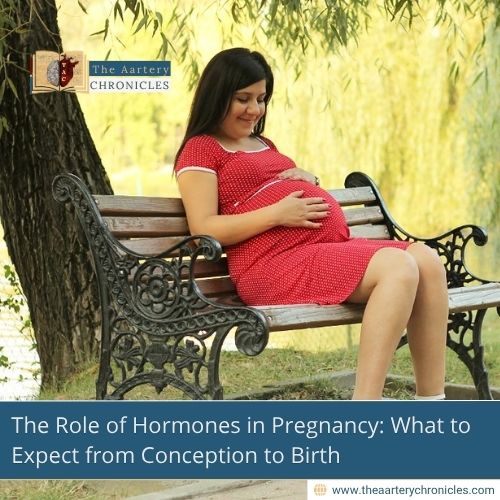

Women’s Health: The Hidden Impact of Environmental Risks
Summary
The article highlights how environmental factors such as air pollution, endocrine disrupting chemicals, and climate change influence women’s health from puberty through pregnancy to menopause, underscoring the importance of awareness, research, and stronger policies.
Introduction
From puberty through pregnancy and into menopause, environmental exposures over the lifespan profoundly influence women’s health. Although genetics and lifestyle are crucial, increasing scientific evidence highlights the significant yet often overlooked impact of environmental dangers, including air pollution, endocrine-disrupting chemicals (EDCs), and climate change, on women’s long-term health outcomes and fertility.
Early Menarche and Environmental Influences
The timing of menarche, a major milestone in female reproductive development, has changed all over the world toward earlier onset in recent decades. This pattern is not just due to genetic influences; environmental exposures, diet, and socioeconomic level are also major contributors.
- Endocrine-Disrupting Chemicals (EDCs): Found in plastics, pesticides, and personal care items, endocrine-disrupting compounds (EDCs) can interfere with hormonal control and disturb pubertal timing. Studies have discovered that girls’ early menarche is probably brought on by EDCs.
- Air Pollution: Exposure to fine particulate matter (PM2.5) raises one’s chance of early menstruation. These contaminants can interfere with hormone receptors, therefore affecting the beginning of puberty.
- Nutrition and Obesity: Certain nutrition choices and a higher body mass index (BMI) are associated with an earlier onset of menarche; poor nutrition, on the other hand, might postpone it.
Early menarche raises the possibility of developing chronic diseases later in life, including diabetes, heart disease, and certain cancers.
Environmental Hazards in Pregnancy
With environmental exposures having possible long-term effects, pregnancy is a very delicate time for both maternal and fetal health:
- Air Pollution: Maternal exposure to air pollutants such as PM2.5, nitrogen dioxide, and volatile organic compounds is associated with a higher risk of miscarriage, preterm birth, low birth weight, and developmental problems in children.
- Climate Change: Rising temperatures and extreme weather events can increase the risk of pregnancy complications, including preterm labor and stillbirth. Environmental disruptions may also restrict access to healthy food and healthcare.
- Heavy Metals and Pesticides: Chemicals such as lead, cadmium, and agricultural pesticides can cross the placenta, affecting fetal development and increasing the risk of pregnancy loss or congenital abnormalities.

Environmental Effects on Menopause and Later Life
Environmental exposures keep affecting women’s health as they become older:
- Earlier Menopause: Early menopause has been linked to exposure to EDCs, including phthalates and pesticides, which may raise the risk of osteoporosis and cardiovascular disease.
- Air Pollution and Climate: Emerging data indicate that air pollution and climate-related stressors could aggravate menopausal symptoms, including hot flashes and sleep disturbances, as well as contribute to possible cognitive decline.
Dimensions of Employment and Socio-Economic Level
Socioeconomic level, geographical location, and job all affect exposure to environmental hazards. Women in lower-income areas may be exposed to higher rates of air pollution and have less access to medical care, while those employed in agriculture or manufacturing encounter more EDCs and industrial chemicals.
Dealing with the Unseen Hazards
A thorough strategy is needed to safeguard women’s health throughout their lifetime:
- Regulatory Action: Imposing more stringent limitations on industrial emissions, air quality, and chemical safety.
- Public Health Programs: Increasing knowledge of environmental dangers and encouraging safe behaviors, especially during pregnancy and adolescence.
- Research and Surveillance: Constant study is required to grasp the impacts of environmental exposures and design focused treatments for at-risk groups.
- Healthcare Integration: Healthcare professionals evaluating women’s long-term health and fertility should bear in mind environmental exposure histories.
Conclusion
From puberty to pregnancy and menopause, environmental dangers to women’s health are becoming more evident in scientific publications. By recognizing and addressing these exposures, we can support healthier lives for women and future generations.
References
- https://www.ijrcog.org/index.php/ijrcog/article/view/14210
- https://pmc.ncbi.nlm.nih.gov/articles/PMC4096833/
- https://pmc.ncbi.nlm.nih.gov/articles/PMC3758734/
- https://www.eshre.eu/-/media/sitecore-files/Factsheets/FACT-SHEET-Female-2024_03_04.pdf
- https://pmc.ncbi.nlm.nih.gov/articles/PMC9360176/
- https://pmc.ncbi.nlm.nih.gov/articles/PMC8988816/
- https://www.sciencedirect.com/science/article/pii/S0378512223004310
- Dr Yashvi Singh
- Women's Health
- 22 August 2025
- 11:00
Reviewed by Dr Aarti Nehra (MBBS, MMST), & Dr Darshit Patel (MBBS)








